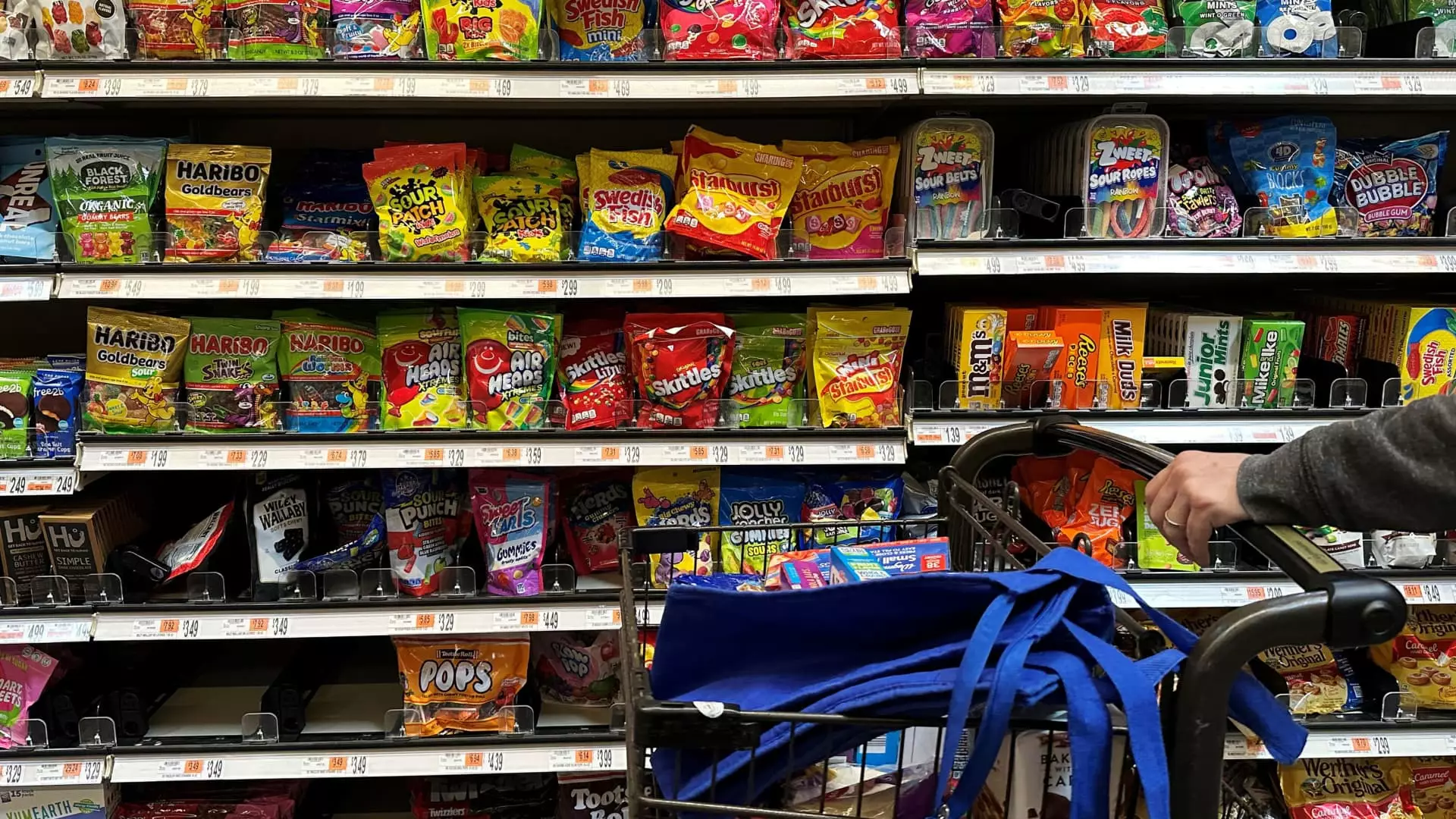The vibrant allure of products like Flamin’ Hot Cheetos or Mountain Dew Baja Blast is facing an impending overhaul as the FDA announced plans to phase out petroleum-based synthetic dyes, a decision that could reshape the American food landscape by 2024. FDA Commissioner Marty Makary’s remarks highlight an alarming reality: for decades, children’s diets have been saturated with chemical additives that not only enhance aesthetic appeal but may also compromise well-being. One must contemplate: at what cost do these eye-catching colors arrive?
These synthetic dyes, such as Red Dye 40 and Yellow Dye 5, have operated as marketing tools to captivate consumers, especially children and parents drawn in by playful colors. Yet, this captivating façade masks undeniable health risks. Research has linked these additives to heightened hyperactivity and other serious health concerns, prompting many to question the ethical implications of their widespread use. The FDA’s impending ban sets a crucial precedent in prioritizing public health over corporate interest.
The Corporate Response and the Loophole Dilemma
The food industry’s response has been less than enthusiastic. Major corporations, like PepsiCo and General Mills, argue against the validity of health claims surrounding artificial dyes, citing a lack of concrete evidence. However, this perspective raises critical questions about responsibility. If empirical evidence shows potential hazards, should corporations cling to outdated practices simply because they are financially beneficial? It seems the precedents for health over profit need to be more firmly established.
Moreover, the FDA’s announcement that it currently lacks a formal enforcement framework raises eyebrows. How will companies be held accountable if they choose to ignore this needed shift? The phrase “we have a mutual understanding” may sound pleasant, but it leaves room for corporate evasion. Efforts to regulate this transition must be continuous and non-negotiable. The vagueness surrounding enforcement mechanisms highlights an ongoing tension between economic interests and public health.
Natural Alternatives: The Path Forward
Commenting on this approach to change, Makary suggested natural alternatives such as beet juice or turmeric to replace synthetic dyes, which raises an intriguing dialogue about the culinary creativity within the food industry. If companies can innovate around these hurdles, perhaps they can broaden their horizons and deliver consumer-favored products that are safe and visually appealing. This presents a dual opportunity: to enhance consumer trust while simultaneously leading the market in healthier options.
Of course, the reality remains that natural alternatives may come at a higher cost, both financially and logistically. Smaller companies may struggle to meet new production demands, risking their competitiveness against bigger players who are more capable of navigating such adjustments. Yet even amid these challenges, it’s vital to push for a healthier food landscape by investing in sustainable practices and forward-thinking solutions.
The Implications of Federal Leadership
The political atmosphere surrounding the FDA under Secretary Robert F. Kennedy Jr. has seen drastic shifts not merely in regulatory policies but also in ideology. The urgency imbued in his comments about addressing artificial dyes reflects a broader commitment to public health, aligning with a center-left liberalism that seeks to prioritize individual well-being over corporate gain. Indeed, Kennedy’s harnessing of political influence to initiate statements on nutritional health reveals a rising consciousness among policymakers regarding the interplay between health, nutrition, and corporate America.
However, caution is warranted. The rapid reforms can breed instability within industries that require sustained commitment to understand consumer habits and dietary trends. Moreover, Kennedy’s overall platform that targets “making America healthy again” can teeter on the edge of oversimplification. The notion that removing synthetic colorings is a panacea for the chronic disease epidemic is misleading; it requires holistic strategies that encompass education, accessibility, and comprehensive dietary reform.
Challenges Ahead and the New Era of Food
As the FDA gears up for this ambitious plan, the road ahead is riddled with hurdles. While the potential ban on synthetic dyes could be transformative, it’s essential to approach the implementation of these new standards with foresight. Real change requires not just new ingredients but an overhaul in how we think about food and health in this country.
Now more than ever, the conversation about ingredients must transcend simple consumption choices; it needs to galvanize parents, educators, and policymakers to create a holistic framework for a healthier future. It isn’t just about what we put on our plates, but how we cultivate a society that values nutrition and wellness amidst a sea of marketing tactics that often prioritize aesthetics over health.
It will take coalitions of brands, consumer advocates, and regulatory bodies to foster a culture where the modernization of food involves weighted decisions—decisions that reflect the collective desire for healthier futures for American children. The phase-out of synthetic dyes is a crucial start, but the journey toward nutritious and safe food continues far beyond this pivotal moment.

